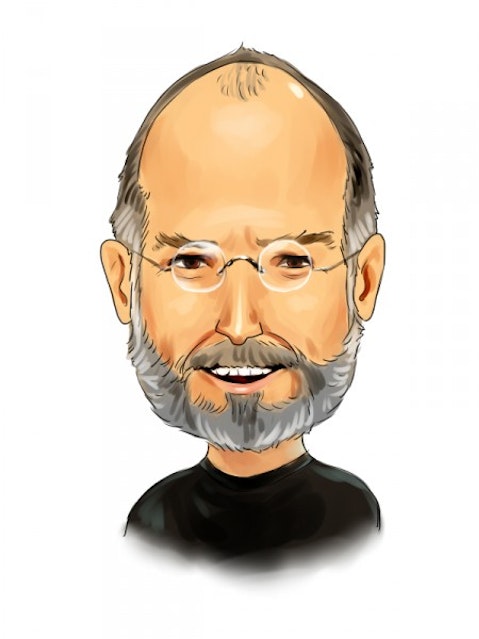Apple Inc (NASDAQ:AAPL) received a lot of media attention regarding the tech giant’s courtroom victory against Samsung (detailed here), but there is one piece of information that has been lost in the shuffle, so to speak. Ardent Apple followers likely remember the company’s China-centric presentation at the Worldwide Developers Conference earlier this summer. For those who missed it, Apple Inc (NASDAQ:AAPL) execs announced that for the first time, its new OSX and iOS6 systems would feature a Siri that understands Mandarin and Cantonese, while including improved handwriting recognition to detect the language’s calligraphic nature. Add to the fact that each will integrate with popular Chinese websites like Sina Weibo, Youku, and Todu, and it’s easy to see that Apple is placing a greater emphasis on the Middle Kingdom.
Looking at the company’s financials, we can begin to understand why. Currently, close to 20% of Apple’s total revenue is derived from Chinese consumers, and its presence in this country has been expanding much more rapidly than it has in other parts of the world. Revenues from outside the country grew by 22.0% over the past year, though China-specific streams flirted with $5.7 billion last quarter after amounting to just $2.6 billion in Q1 of 2011. As mentioned in the company’s most recent 10-Q, much of this growth can be attributed to “the successful launch of the iPhone 4S in mainland China.”
Interestingly, Apple’s aforementioned gains were achieved through its agreements with China Unicom (NYSE: CHU) and China Telecom (NYSE: CHA), the country’s second and third largest mobile providers. Even though the release of the iPhone 4S was heavily anticipated – and widely successful – in China, it was unavailable to 70% of the mobile-using public. China Mobile (NYSE: CHL), whose SCDMA networks are incompatible with the iPhone’s WCDMA capabilities, was in the dark. Now, it is estimated that around 15 million of CHL’s subscribers purchased the smartphone for Wi-Fi usage only, but this is a small sliver of the carrier’s user base of nearly 700 million strong.
As we near the expected launch date of the iPhone 5, which is rumored to be on September 12th, there is obvious speculation on whether China Mobile and Apple Inc (NASDAQ:AAPL) will reach a deal. Now, the obvious question that must be asked is: why doesn’t Apple simply release a version of the iPhone 5 with SCDMA functionality? While the obvious answer might be cost-based, it appears that it is not that simple. According to Ubergizmo, China Mobile “has requested that Apple give them a cut of the sales from the iTunes App Store,” a move which the company is understandably hesitant to make.
Now, one development that has been underappreciated by the blogosphere is Qualcomm’s (NASDAQ:QCOM) release of its fifth generation Gobi chipset platform, which, according to their corporate press release, would “support regional LTE frequencies with backwards compatibility to existing 2G/3G technologies.” In short, this means that if the iPhone 5 does indeed have 4G LTE connectivity (which is heavily expected), Qualcomm’s device would allow it to support China Mobile’s network, assuming a deal could be reached.
From an investment standpoint, shares of Apple Inc (NASDAQ:AAPL) are still attractively priced at their current price around $675 a share. At this range, the stock sports a Price-to-Earnings ratio of 15.8X, which is below its 5-year (21.9X) and 10-year (30.3X) historical averages. Moreover, this valuation is below primary competitor Google Inc (NASDAQ:GOOG) at 20.1X, despite the fact that the company has generated a superior 3-year average EPS growth (59.8%) in comparison to Larry Page and Co. (30.8%). In fact, when this growth is factored into the equation, we can see that Apple has a PEG ratio of 0.6; typically any figure below 1.0 signals an undervaluation.
The Street’s year-end earnings forecasts predict a year-over-year EPS growth of 58.6% for the tech giant, as it is expected to hit earnings of $43.90 a share after reaching just $27.68 one year earlier. By 2013, this figure rises another 20.2% to $52.77 a share. Using these estimates, we can see that fairly valued shares of Apple Inc (NASDAQ:AAPL) have a one-year price target of $950, with this upside extending to $1,100 by the start of 2014. Now, it should be remembered that the company’s last earnings release was surprisingly underwhelming, but the upcoming release of the iPhone 5, as well as a potential deal with China Mobile is likely to ward off any other near-term disappointments.
The hedge fund industry loves this stock, as we’ve already mentioned in this article. At the end of the second quarter, 140 funds held shares of Apple Inc (NASDAQ:AAPL), which was materially larger than the likes of Google (114) and Microsoft (NASDAQ:MSFT) at 98. Some prominent managers who currently hold more than 13.0% of their portfolios in Apple are Chase Coleman, Julian Robertson, David Einhorn, and Philippe Laffont.
To recap: Apple is currently trading at relatively attractive price multiples, and despite its impressive growth in the past, the markets have yet to fully appreciate the company’s earnings potential. Using widely accepted EPS estimates, which forecast solid bottom line expansion over the next two years, our year-ahead price target flirts with $1,000 a share. While bears may cry that this target is overly optimistic, the company’s widely anticipated iPhone 5 release, and an eventual deal with China Mobile have the ability to vault Apple Inc (NASDAQ:AAPL) to a fairer valuation.





